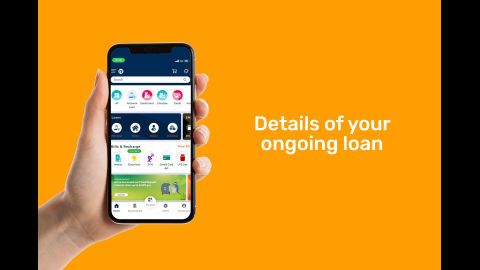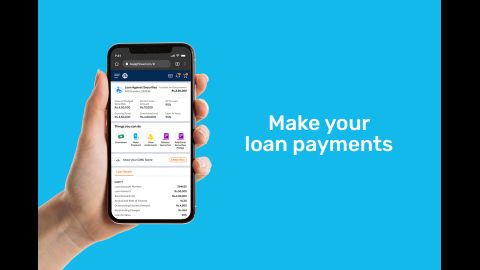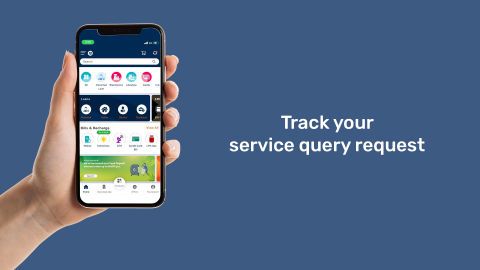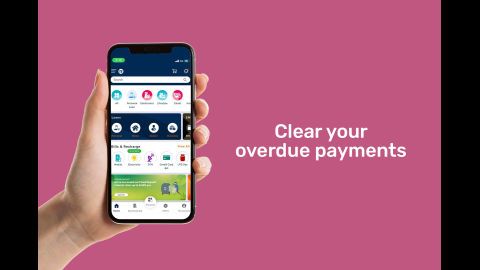Obtaining a two-wheeler loan involves repaying the loan amount in manageable equated monthly instalments (EMIs). These EMIs will be deducted from your bank account on a predefined date. Once you have paid off all your EMIs, your loan reaches its conclusion, a step known as loan closure.
However, if you find yourself with surplus funds and aim to settle your loan ahead of schedule, you can opt for loan foreclosure. This involves repaying the remaining loan amount in one go. Loan foreclosure is a way to expedite the loan repayment process and potentially reduce the overall interest costs. If you’re looking to foreclose your two-wheeler loan, you can visit our customer portal for easy online process.
Follow these simple steps to foreclose your loan from the comfort of your home.
- Click on ‘Sign-in’ to visit the Bajaj Finance customer portal.
- Enter the registered mobile number and the OTP to sign-in.
- Verify your details by entering your date of birth and proceed.
- Select the loan account you want to foreclose.
- Choose ‘Foreclosure’ from the payment options available.
- Enter the required details and review the applicable foreclosure charges and proceed to pay.
What to do after closing the loan?
After closing a two-wheeler loan, several important steps help ensure your financial records are in order and safeguard against potential issues in the future. Here’s a step-by-step guide on what to do:
- Collect a No Objection Certificate (NOC): Once the final payment is made, request a No Objection Certificate from your lender. This document certifies that all dues are cleared and the lender has no claim over the two-wheeler. The NOC is essential for transferring ownership and updating records at the Regional Transport Office (RTO).
- Obtain Loan Closure Documents: In addition to the NOC, request other closure documents, such as a loan closure certificate. These confirm that the loan has been fully repaid. Retaining these documents is crucial for future reference, especially if you plan to sell or transfer ownership of the vehicle.
- Remove Hypothecation from the RTO: With the NOC and other closure documents, visit your local RTO to remove the lender’s name from the vehicle’s registration. This process, known as hypothecation removal, formally ends the lender's claim over your two-wheeler, making you the sole owner.
- Update Your Insurance Policy: Inform your insurer of the loan closure and provide them with the NOC. This ensures your two-wheeler insurance policy reflects you as the sole owner, protecting against any disputes during claims.
- Verify Credit Score Update: Ensure the loan closure is updated on your credit report. Check your credit score after a few weeks to confirm that the loan account reflects a "closed" status, as this positively impacts your credit profile.
Following these steps ensures a seamless transition after your two-wheeler loan closure, giving you full ownership rights and eliminating potential financial liabilities associated with the loan.
It is important to assess the associated terms, conditions, and additional charges prior to proceeding with loan foreclosure.
Once your loan is completely paid off or upon foreclosure, a no objection certificate (NOC) is automatically generated. Securing your NOC upon settling your two-wheeler loan is of utmost importance. It serves as proof of loan settlement, enabling smooth ownership transfer and avoiding legal hassles.
Your NOC will be sent to your registered contact address within 10 business days upon loan closure. The loan NOC has a limited validity of just 90 days from the issuance date. Present the NOC during its validity period to eliminate Bajaj Finance Limited's hypothecation from your registration certificate (RC).
If your two-wheeler loan NOC has been misplaced or expired, you can quickly generate a duplicate NOC. You can visit our customer portal and raise a request for a duplicate NOC.
You can use our app to foreclose your loan or generate a duplicate NOC while you're on the go. Visit App Store/ Play Store to download the Bajaj Finserv app today.




